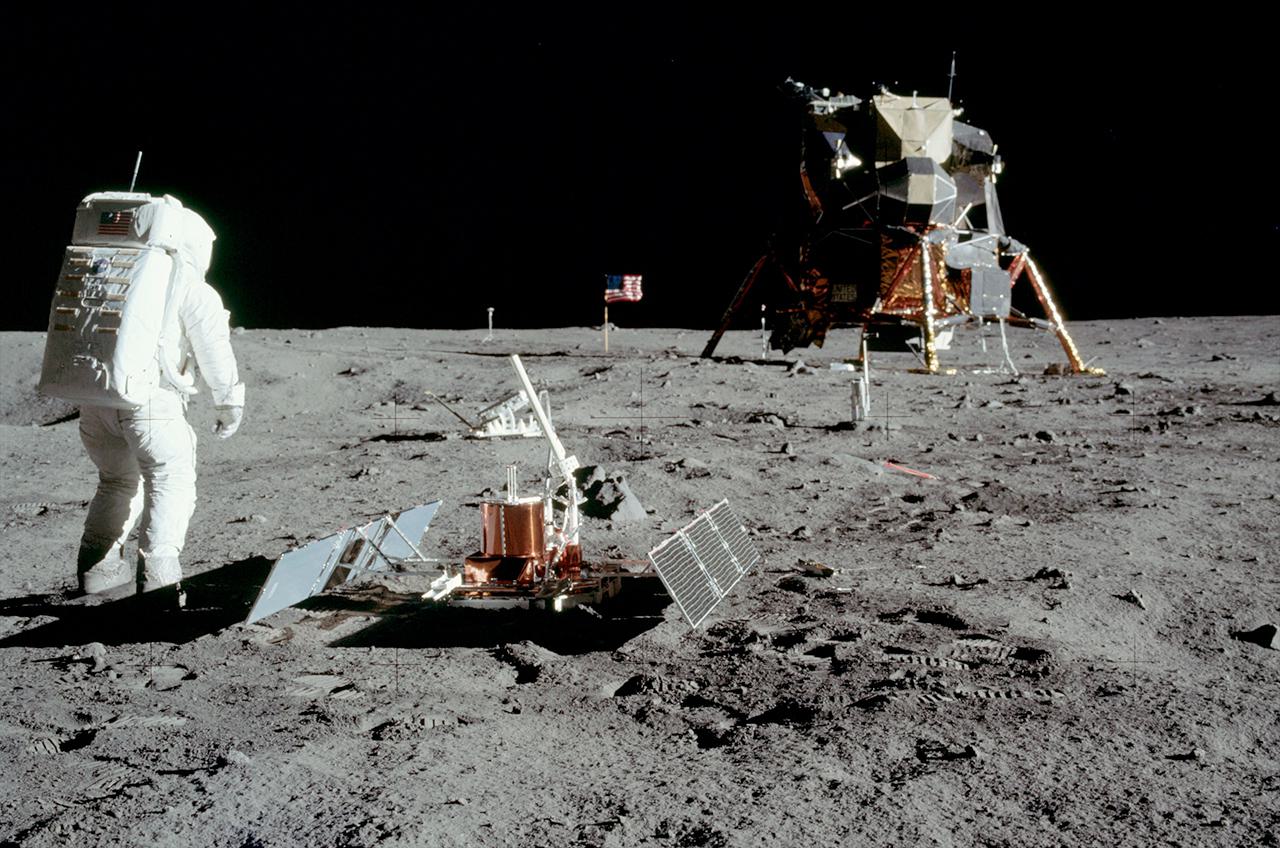On July 20, 1969, NASA astronaut Neil Armstrong became the first person to walk on the moon.
Apollo 11 was the manned mission to the Moon. While Armstrong was the person that made, “That’s one small step for a man, one giant leap for mankind,” moment. Over 400,000 Americans were employed in the Apollo mission by NASA and its corporate partners, including thousands of Alabamians working for NASA at the Marshall Space Flight Center in Huntsville.
Werner Von Braun, a German rocket scientist working for the U.S. Army after World War II, had been a vocal advocate for using the rocket technology he and his team pioneered for Nazi Germany. He advocated this rocket technology be used for peaceful purposes beginning in the mid-1950s. The American effort to go into space began on Oct. 4, 1957, when the Soviet Union launched Sputnik I, the first manmade satellite into space. Americans were horrified that the Soviets appeared to have technical superiority over the United States.
The Dwight D. Eisenhower (R) Administration and Congress responded by ordering the creation of the National Aeronautical and Space Administration to be created. Von Braun and his team of scientists that had been working at the Army’s Redstone Arsenal in Huntsville were transferred to NASA and the construction of the Marshall Space Flight Center was ordered. A handful of Redstone rockets were transferred from the Army to NASA and the U.S. space effort began.
The Soviets followed that early success with the launching of Cosmonaut Yuri Gagarin into space in 1961 – the first human being launched into space.
President John F. Kennedy (D) responded to that a month later by announcing not only were we also going to go to space, but we were going to be on the moon by the end of the decade.
The technical challenges were daunting. Contrary to popular belief, the Soviets were behind the U.S. technically in the 1950s. U.S. warhead designers were able to build a smaller atomic bomb than the Soviets were at the time. This meant that it took a much bigger rocket for the Soviets to effectively launch one of their nukes to the U.S. than vice versa. Those big Soviet missiles however proved to be of sufficient size to launch a payload into Earth orbit – something that the U.S. had not seriously considered until the Soviets were doing it.
The whole satellite industry: weather satellites, satellite communication, GPS, and satellite TV all were born as a result of the space race.
The first American into space was Alan Shepard. John Glenn became the first America to orbit the Earth. The first American spaceship was the tiny Mercury module. It was followed by Gemini (with two crew members) and Apollo (with three crew members). Von Braun and his team needed a much bigger rocket to take the Apollo crew and all of their equipment to the moon and then get the astronauts home. That mammoth rocket – to this day still the most powerful rocket to ever launch a vehicle into space – was the Saturn V.
Three Saturn V rockets still exist. One is on display at the Kennedy Space Center in Florida, one is at Houston, and one is at Marshall.
Apollo did not begin well. A fire broke out in the module of Apollo I in 1967 and the three astronauts perished. This tragedy delayed the program for a year and a half as NASA worked to figure out what went wrong and fix any errors in the design.
After several unmanned missions to test the systems, astronauts went back into space in October 1968 with Apollo 7. Apollo 8 took three astronauts to the Moon. They orbited the moon ten times but did not land there. Apollo 9 tested the lunar module for the first time. Apollo 10 went to the Moon and orbited 31 times.
The Soviet Union never landed a cosmonaut on the Moon. No nation has done so since the Apollo missions were completed in the 1970s.
Today NASA is working on an even bigger rocket – the Space Launch System – and a bigger lunar vehicle - Artemis. An unmanned test of Artemis is scheduled for late August. It is hoped that NASA will return to the moon in the coming years.
To connect with the author of this story, or to comment, email brandon.moseley@1819News.com.
Don’t miss out! Subscribe to our newsletter and get our top stories every weekday morning.










